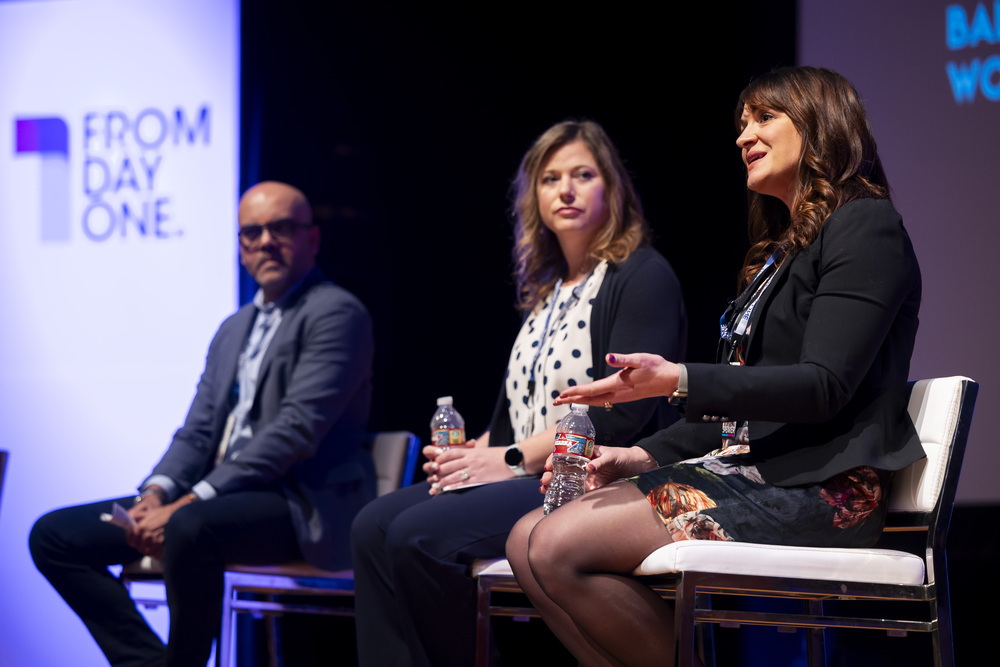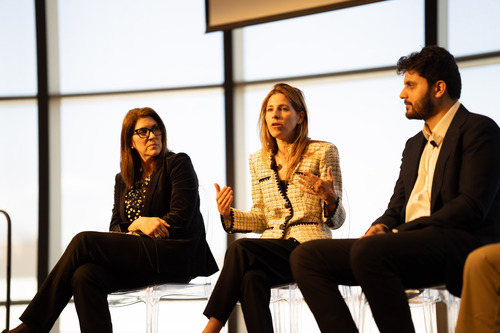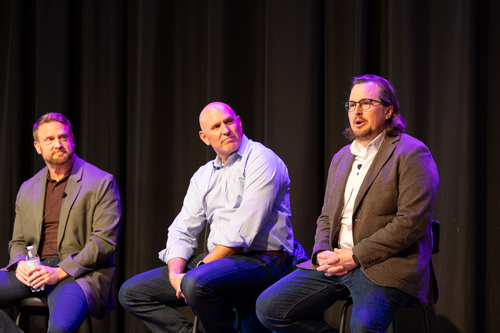Does Your Company Genuinely Care About Well-Being? How to Show It Through Your Culture
When Betsy Kippenhan, VP of global talent acquisition at Comcast, moved from Denver to Seattle in July 2018, the first thing she did before checking into her temporary home was join a gym in the neighborhood. It was crucial that her relocation be as much a personal transition as it was a career transition.“Things have been going pretty well in my career. But my husband and I had two children, and I think that the part of me that was let go was my own well-being,” Kippenhan said. “So it was really about creating new routines. And I’m proud to say for the past five years, I’ve continued to add to those routines, whether it’s listening to a new audiobook or juicing every Sunday. I’ve found that far more important than my career.”Kippenhan spoke alongside three other senior leaders at From Day One’s conference in Seattle in a panel titled “Does Your Company Genuinely Care About Well-Being? How to Show it Through Your Culture.” The panelists, in conversation moderated by Diana Opong, a reporter with KUOW Public Radio, discussed how organizations can avoid the “well-being washing” trap and translate their promises into meaningful action. But change, as they often say, begins at home. Each panelist began by outlining measures they take to ensure their own personal well-being.For Muhammad Umar, Divisional VP, talent diversity and change management at REI, well-being comes in the form of regular walks. Melinda Mansfield, head of business development at SecureSave, says for her, it comes from being able to prioritize important tasks rather than getting caught up in everything coming at you at once.But how does this translate into their roles as leaders? Should leaders be mandated to incorporate a culture of well-being from the top down? Umar believes the keyword here shouldn’t be “mandated” but “modeled.”“A leader’s role is to guide their teams both personally and professionally. But how do we start to talk about well-being on a regular basis so that it’s something that a leader models? A leader that I know puts everything that she does to focus on well-being onto her calendar publicly. This includes, ‘I’m gonna walk my dog for five minutes.’ She does that to make sure that she sets the tone of her team.” Mansfield agrees, outlining how crucial it is that managers show their commitment to well-being so employees are encouraged to value it themselves. Managers who send out emails on the weekends or late at night display a lack of work-life balance, even if they don’t necessarily expect employees to respond at those times.“I think putting things on the calendar so that everyone can see where you’re prioritizing yourself gives them permission to do it as well,” she said.The panelists discussed the topic "Does Your Company Genuinely Care About Well-Being? How to Show It Through Your Culture" at From Day One's Seattle conference Andy France, corporate wellness consultant & head of enterprise accounts at Burnalong, says that leaders should simultaneously be encouraged to share authentic stories, not just of their successes but their struggles. “Because when people hear that, they resonate and feel comfortable speaking up,” he said. However, as we often see, there is a significant disconnect between the top management and employees. Middle management is thus expected to play a significant role in bridging that gap, or as Opong puts it, “to help employees balance hustle culture and their own well-being.”Kippenhan says this will only be possible when managers are equipped with the right training and tools. The expectation of a leader five years ago is vastly different from what it is today, the VP says. “We have frontline leaders who have been working with some of the same people for 30 years. And now, all of a sudden, they’re having conversations that they’ve never been asked to have before. We can’t just ask them to do something without giving them the tools and the how.”Umar adds that employee expectations have similarly evolved. More individuals than ever before are entering the workforce, expecting their leaders to have conversations about mindfulness and wellness.Meanwhile, France points out that the ever-compounding role of middle management professionals has led many to suffer from burnout. They, too, he believes, can benefit from resources dedicated to well-being and from somebody to talk to.Mansfield says that one of the key benefits of this top-down managerial approach is that it encourages workers to be more vulnerable and normalizes talking about mental health. “The stigma is less than where it was 10-20 years ago,” she says. “But it’s still something that employees might not tell the people closest to them, much less go to their manager and let them know they’re struggling.”A solution Kippenhan outlines to keep the conversation going is the concept of a check-in question. “In every staff meeting, we give people a chance to breathe and maybe share some things. Sometimes, they can be fun. Other times, they can be a little bit more serious. And obviously, people have the choice to share what they want and how much they want.”It’s equally crucial to keep track of how these questions have changed over time, says Umar. “I remember when I first used to ask those questions, people would have a very canned response. Now, I feel they’d be more honest.”He says this is a sign of the changing conversation around mental health and traction that organizations can’t afford to lose.Kippenhan further emphasizes a proactive approach to mental health. This involves getting every employee engaged at an early stage and preventing challenges from reaching a crisis point. Companies should take steps to ensure that their mental health benefits are available 24/7.Recent research finds that just one in three women in the workforce feels their employer is actually upholding its commitment to well-being. Similarly, people with disabilities may find their experience to be different from their able coworkers. So the question remains: While there are many common stressors, how can employers take an inclusive approach to ensure employees from across backgrounds are heard? For Umar, it starts by identifying the common stressors and building programs to address the many things that could occur. “We have a program at REI, which is pretty handy. It allows you to navigate the experience you’re going through and find a solution based on that. So you actually meet a person and talk about some of the stuff you’re going through.”It’s also crucial to have employee resource groups to avoid taking a one-size-fits-all approach to well-being, says Mansfield. “If you’re having an issue that is inclusive to a demographic that you’re in or a certain situation, you’ve got groups and mentors and peers that you can go to, as well as the benefits your employer is giving you.”Keren's love for words saw her transition from a corporate employee into a freelance writer during the pandemic. When she is not at her desk whipping up compelling narratives and sipping on endless cups of coffee, you can find her curled up with a book, playing with her dog, or pottering about in the garden.


.jpg)


